Note: letters in brackets correspond with the map at the bottom of the article.
It’s dark when I arrive at Palermo airport, too late to take in the scenery, so I hit the Autostrada going east. I’ve heard that driving in Sicily is not for the faint-hearted so after 100km, I’m happy to arrive safely at the Hotel Tourist in Cefalu. Next morning it’s sunny as I start the road to the South, and I climb upwards into the Madonie mountains past hilltop towns like Geraci Siculo (B) and Petralia Sottana (C). The forested slopes soon give way to craggy peaks but suddenly the mist comes down.
Visibility is zero so I cut my losses and drop down to the valley and take the direct route to Agrigento (D). Originally called Akragas, this was one of Sicily’s richest and most powerful Greek cities and now only the 5th century BC Doric temples remain. They’re just outside the town, on a low ridge, and a visit to the Valle dei Templi is not to be missed. You see them as you approach, towering above you and they’re exceptionally well-preserved. It takes at least half a day to explore them fully and best to set out early in the morning before the sun reaches its peak.
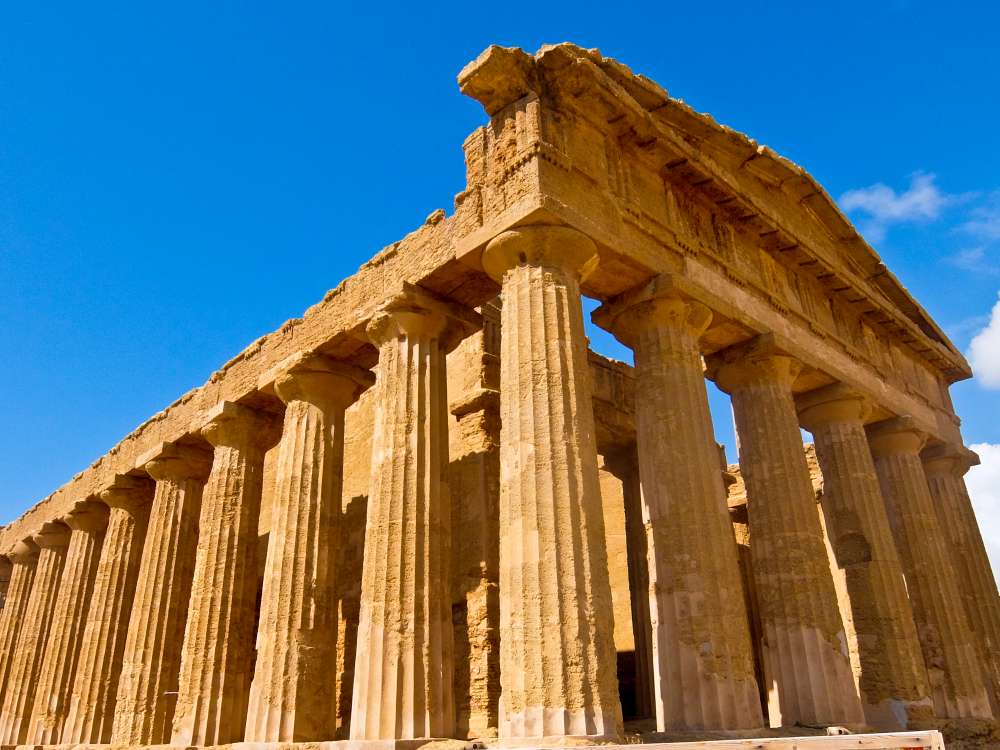
Agrigento Temple (c) Rupert Parker
Of course, I get there around midday and struggle with the heat as I clamber over the ruins. Fortunately, my next stop is a rather delightful olive farm, Azienda Agricola Mandranova, a 20 minute drive away, my home for the night. Part of it has been converted to a boutique hotel and I can’t resist a dip in the pool. It’s harvest time and truckloads of the ripe fruit are arriving to be crushed in the mill. As you’d expect, food here is excellent, local produce to the fore, and all accompanied by their glorious green olive oil.
Next day, I drive east, taking a winding coastal road through olive groves, passing abandoned farm buildings and tomato greenhouses, in various stages of decay. This is the heart of Sicily’s dreamy south which tourists don’t normally see. What people will be familiar with is the tiny seaside village of Punta Secca (E) since it’s a location for the TV version of Inspector Montalbano. His fictional home is in a glorious position, right on the beach, with a large terrace opening out to the sea. He always begins his morning with a swim so, of course, how can I resist? The water is warm, slightly choppy, but very refreshing. In the summer this place is packed but today it’s almost deserted.
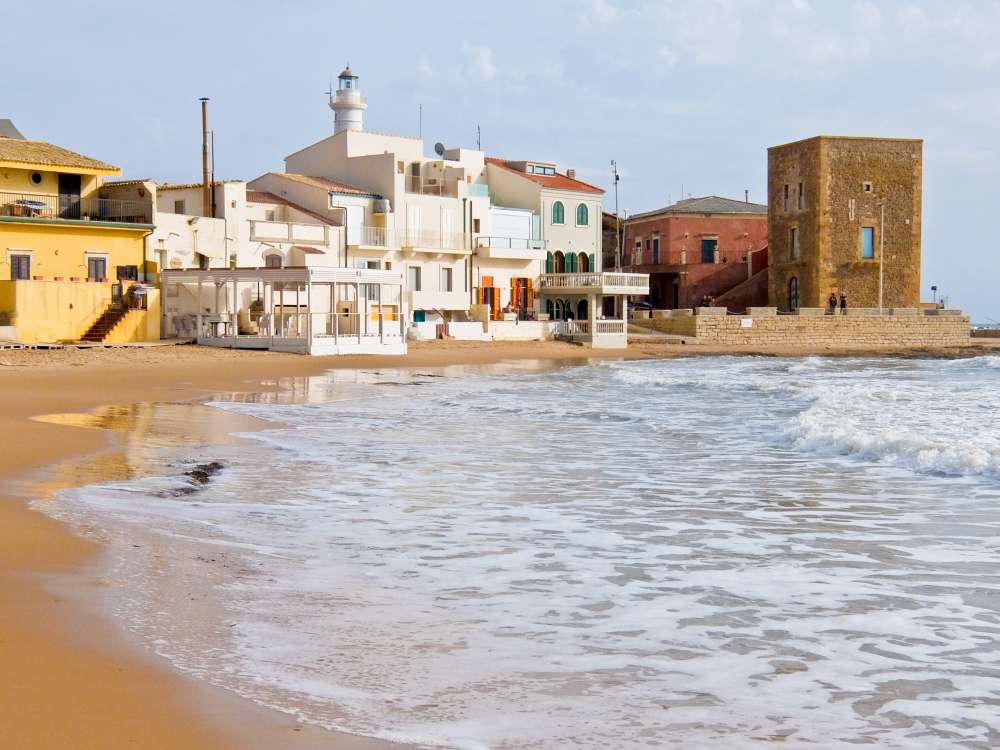
Punta Secca Beach with Montalbano House (c) Rupert Parker
My next destination is Scicli (F), half an hour inland, where the town hall doubles as the police station. This is one of the South’s famous baroque towns, rebuilt after a devastating earthquake in 1693, and it’s the location for many scenes in the TV series. Driving here is a nightmare, since the streets are so narrow, and the GPS takes me down blind alleys as I try to make my way to Hotel Novecentro. This is a restored Palazzo with just a handful of rooms and mine has a magnificent painted ceiling, with a balcony opening to the street. It’s a good base for exploring the town, so I abandon the car and set out on foot.
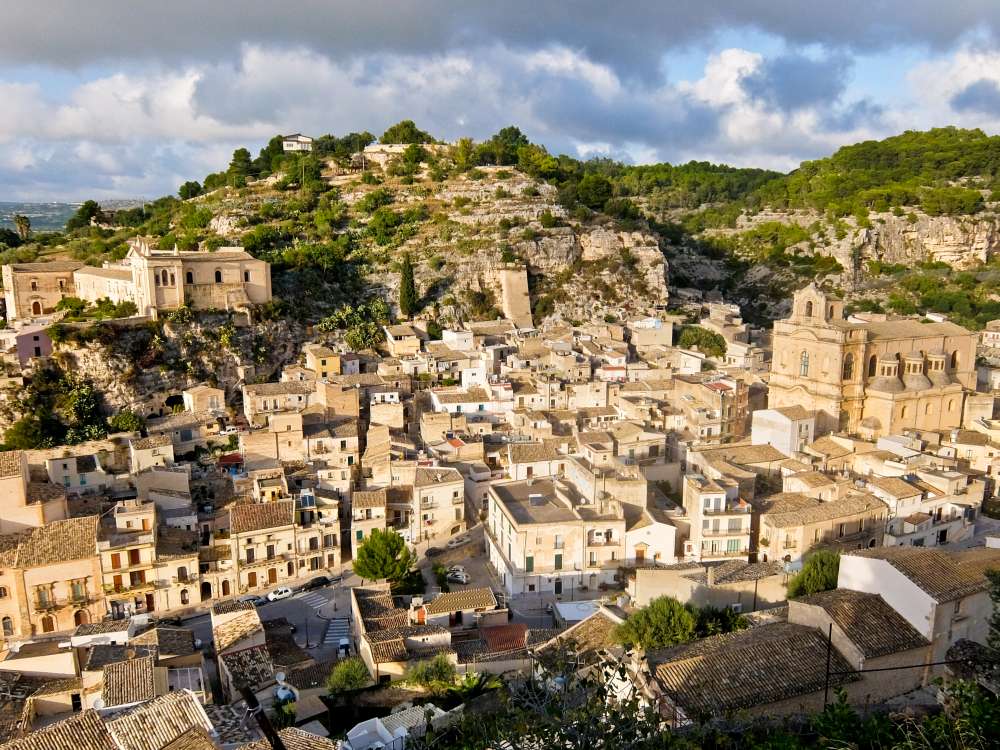
Scicli (c) Rupert Parker
Above the centre is a limestone ridge, the site of the original settlement, crowned by the abandoned church of San Matteo. As defence became less of a priority, the town gradually moved downhill to its present site, although people were still living in caves in the side of the cliff until the 1950’s. As you’d expect, the views are spectacular and rambling overgrown paths lead past deserted cave dwellings to the church of Santa Maria della Catena, itself built into the rock.
Back in the centre, the Municipio or town hall is at the head of the pedestrianised Via Momina Penna. Two immense columns frame the entrance and there’s a grand balcony above flying the flags of Italy, Sicily and the EU. The street itself is a long assembly of ornate churches and palazzi with tables outside ready for that early evening aperitif. The Palazzo Bartolomeo, just round the corner is perhaps Scicli’s Baroque masterpiece, with grotesque grinning figures, complete with bald heads and tongues outstretched, supporting its long balconies.
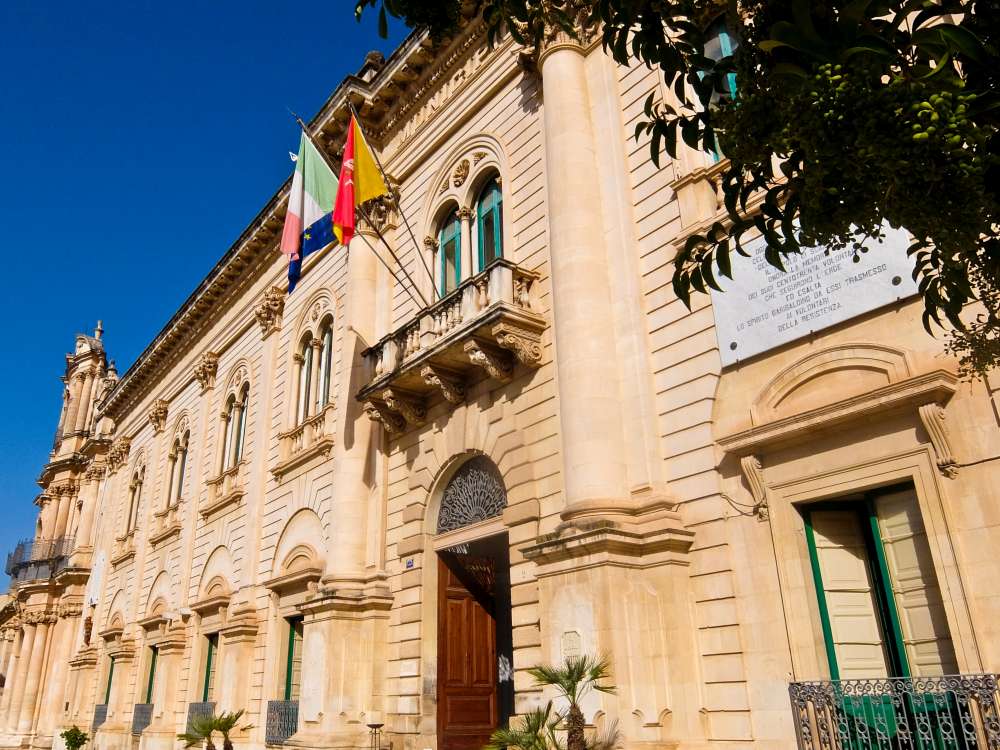
Scicli Townhall (c) Rupert Parker
Noto (G), around an hour away, was started afresh on a new site after the 1693 earthquake destroyed the original town, now completely abandoned a few miles away. The baroque centre is built on a grid pattern, with two distinct sections – the lower town for the political and religious buildings and the upper for the people. The main street, Corso Vittorio Emanuele, starts at the imposing Porta Reale, runs past the twin towered Cathedral, and is stuffed full of the town’s celebrated buildings.
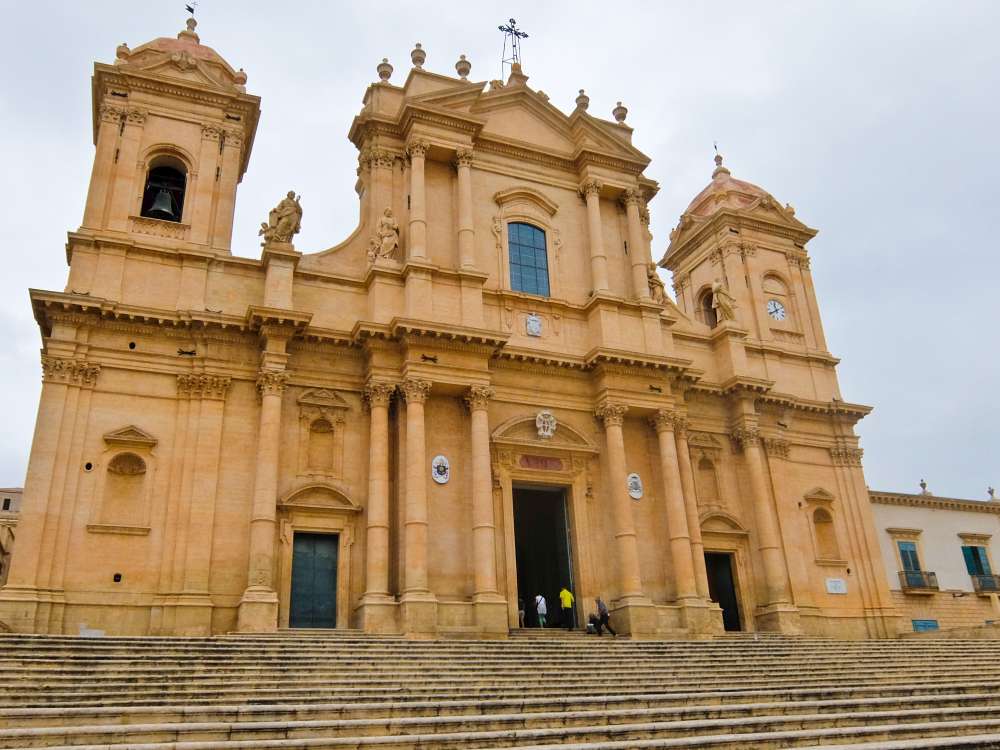
Noto Cathedral (c) Rupert Parker
Ragusa (H), in the other direction, was also built on a grid plan after the earthquake but here the original town was rebuilt by the inhabitants following the medieval street layout. It makes for two distinct sections, Ragusa Ibla below and the Baroque town of Ragusa Superiore above. You need to be fairly fit to climb to the new Cathedral but the reward is a stunning view of the roofs of the old straddling its outcrop of rock.
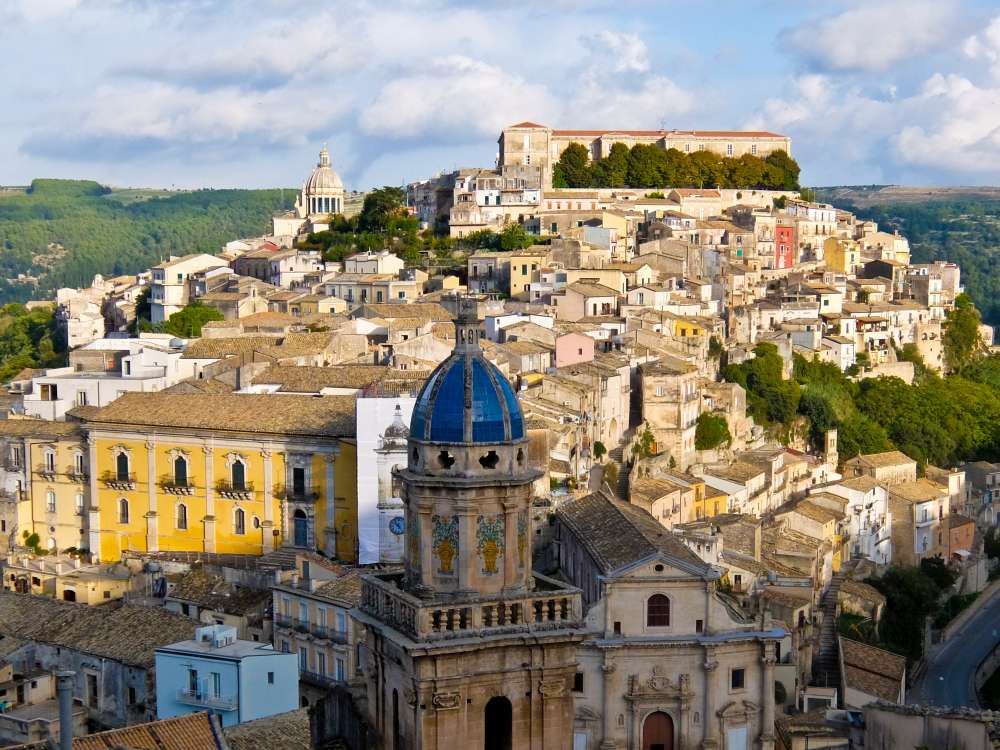
Ragusa (c) Rupert Parker
To end my trip I drive to Portopalo (I), the southernmost town on the island, and at one stage the road gives out completely. I struggle on, as the heavens open, and finally reach the sea. The tiny islet of Capo Passero is the true south-eastern tip of Sicily and I can make out the ruins of the 16th century fortress, built to repel Turkish pirates. Today, though, it’s the waves crashing over the low causeway which prevent me reaching my final destination.
Prestige Holidays (01425 480400) offers a five night break in Sicily for £489 pp. It includes flights with Ryanair from Stansted to Palermo, a hire car (Group A), two nights at Hotel Tourist on HB, one night at Mandranova on BB and two nights at Hotel Novecento on BB, then Ryanair flights back from Comiso to Stansted.
One week’s Meet and Greet airport parking at Stansted Airport with Airport Parking and Hotels (APH) costs from only £63.
Italia has information about the country.
